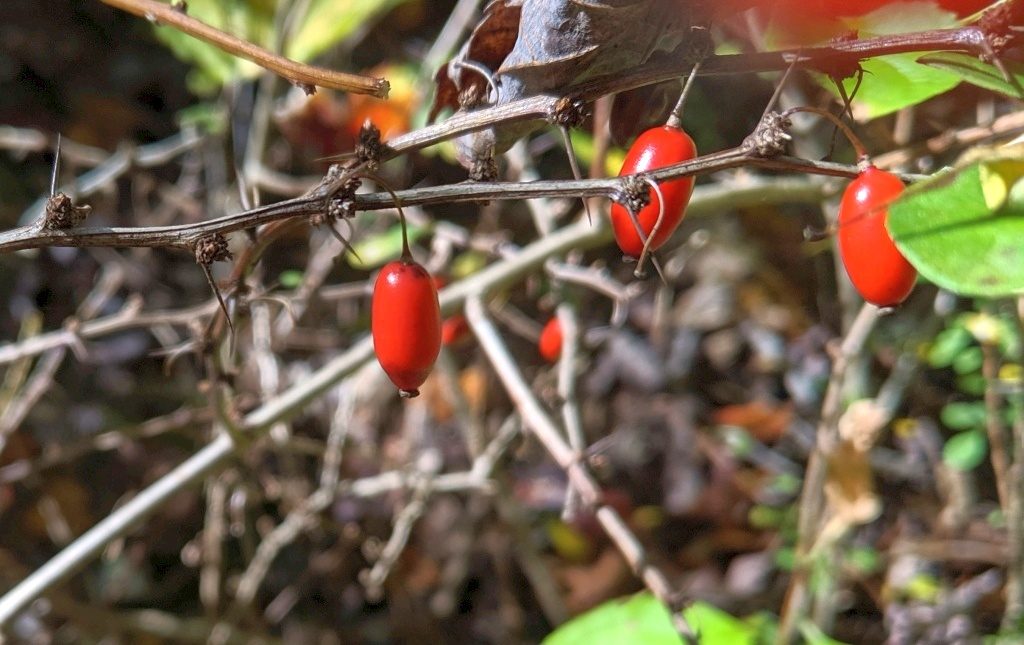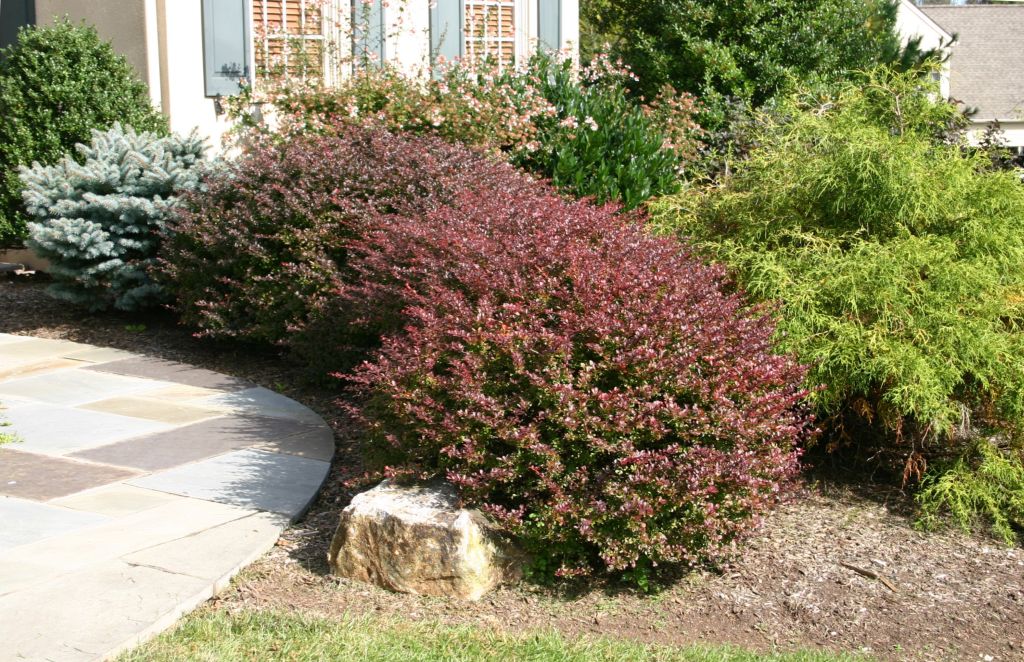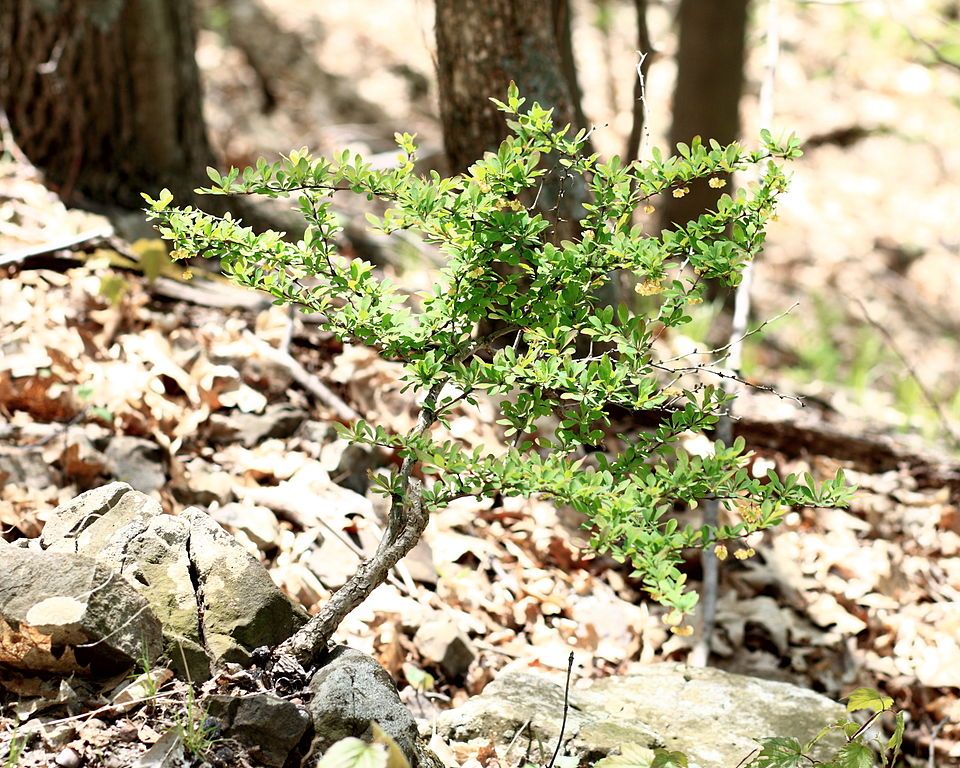
17 November 2021
If you’ve ever tangled with Japanese barberry (Berberis thunbergii) you know this thorny plant has pretty berries but grows quickly into an impenetrable hedge. Imported for landscaping in the late 1800s, it has gone wild in the state and invaded the woods. Deer refuse to eat it. Despite its invasive attributes it was still sold for landscaping in Pennsylvania until now.
Last month the PA Department of Agriculture added Japanese barberry (Berberis thunbergii) to the state’s list of noxious weeds. As of 8 October 2021 it cannot be legally sold or cultivated in the state though you may see it in nurseries while enforcement is phased in over the next two years. In the meantime, you should not be offered Japanese barberry as a landscaping choice; don’t buy it.
By fall 2023 Japanese barberry should be a thing of the past in the landscaping world but it is rampant in the woods and already may be in your yard. Cultivars were bred for colorful leaves from yellow-green to red to purple.

In the wild and waste places it reverts to plain green leaves.

No matter where you find it don’t get too close. If you brush against it — or heaven forbid, have to bushwhack through it! — check your clothing for ticks. Japanese barberry is a magnet for black-legged ticks that harbor Lyme disease. As Wikipedia explains:
It is hypothesized that spread of barberry is correlated with the spread of Lyme disease. Tick numbers are higher in areas with thick barberry understories, as opposed to areas with controlled barberry or no barberry. In one study, 280 ± 51 adult black-legged ticks, Ixodes scapularis, were found per hectare in a barberry infected area, while only 30 ± 10 adult black-legged ticks were found per hectare in otherwise similar area with no barberry present.
— Wikipedia Berberis thunbergii account
Do you have Japanese barberry in your yard? Did you get Lyme disease in your garden? After I took the photo at top I found a tick on my pants. Beware!
This 2016 video from Minnesota shows how to recognize Japanese barberry in the wild and then describes how they’ve tried to eradicate it in Minnesota. Flames!
Thankfully Pennsylvania will no longer add new barberry to the landscape. Invasive Japanese barberry is banned at last.
(photos by Kate St. John and from Wikimedia Commons, see the captions)
Is there a bayberry other than Japanese bayberry? Is my bayberry Japanese barberry.
Nan, if it’s a landscaping plant it is Japanese barberry or a cultivated hybrid. There was an American version but rarely seen anymore.
I’m sure the hedges in the yard where I lived as a child were barberry. I can remember the thorns and berries on the bushes. But one interesting thing I also remember was that we usually had praying mantis egg cases on the bushes. I don’t know if that is common for praying mantis to use barberry specifically, but I rarely see praying mantis egg cases now.
I remember barberry bushes being in my yard as well. I also know that my parents lived on Barberry Terrace when I was born. I have no idea if it was named for the shrub or not, but I know those bushes were all over the place. As I got older, I remember the thorns.